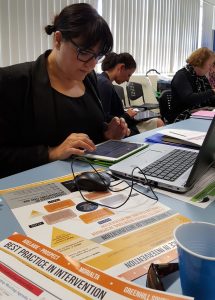Differentiation

Intervention for all = Differentiation for the many, not just the few
“Differentiating for the many, not the few”
How does a teacher meet each child’s needs at the same time as meeting the needs of the others? The big question is really how can each teacher enhance the capacity of each student to learn well? How intentional are we about addressing the needs we know about?
Dr Jane Jarvis, Flinders University at a recent keynote focussed on strengthening our understanding of curriculum differentiation and tailoring the learning to meet the needs of individuals and groups at the point of task and assessment design. Carol Tomlinson’s approach to differentiation is an influence on Jane’s thinking.
Differentiation Pathways for Teachers We need to be realistic about the demands of differentiating the learning for 30 students. Jane outlined ‘differentiation pathways’ for teachers, i.e. flexible pathways that are tailored to the changes in learning context
- Differentiation by ‘readiness to learn’ (Where does the child currently sit? And what’s the best way to move the child?)
- Designing appropriate challenge for each learner as a continuum from too easy > on target > too hard (Involve students in understanding mind set concepts and language)
- Differentiating by interest (Gender, culture, personal strengths and subject preferences)
- Inclusive approaches to assessment (Am I always asking students to provide a written response?
- Inclusive learning environments (Safe, supported and importantly valued)
What differentiation is and isn’t
- Not variety for the sake of variety
- Not individualized assignments for each student
- Not only for students with identified needs
- Not about ability grouping (negligible effect size)
- Not watering down the curriculum
- Not in the moment changes
Differentiation is
- Same content with differing layers of complexity
- Organization and planning for students in relation to the content, e.g. Levelled texts that cover the same concepts so all learners can participate in a discussion
- Flexible groupings according to the context
- All students working in the ‘on target’ zone
- Conscious building of the learning environment
- Intentionality in the planning stage, e.g. when selecting resources
- Differentiation in the planning stage, e.g. to personalize vocabulary lists
- Front loading and pre teaching vocab to some students
- Tiering questions – same content but more scaffolding with some questions
- Varied journal prompts
- Differentiated anchor activities
What are ways schools can strengthen teacher capacity to explicitly plan for learners to be in the on target zone? What opportunities currently exist in sites for conversation with teachers about ‘differentiating for the many, not just the few’?

